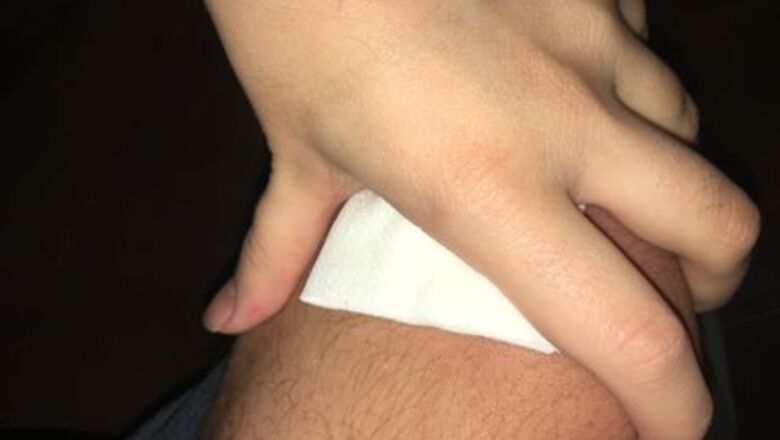
views
Before Cleansing Your Wound
Wash your hands! Before you begin cleaning and touching your wound, it is important that your hands are clean to prevent infection. Have a clean, dry paper towel easily accessible to prevent contamination of sterile hands. Wash your hands with soap and lukewarm water for 30 seconds. Dirty hands may increase the likelihood of infecting your wound. To wash your hands thoroughly, scrub between your fingers, underneath your fingernails, and up past your wrists. If visible debris remains, rewash hands.
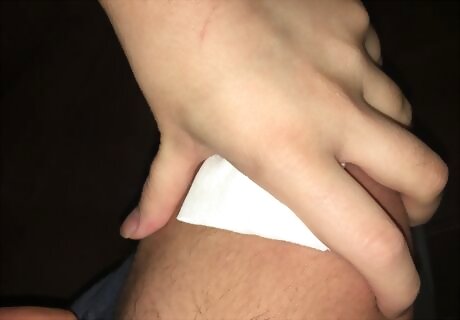
Check the wound. Look for excessive bleeding or signs of infection. Use a sterile gauze to apply gentle pressure on the wound if bleeding. With clean hands, place clean gauze to cover the entire wound. Make sure to maintain pressure to the wound, if still bleeding, to decrease blood flow and encourage blood clotting. Only use a moderate amount of pressure, because too much pressure may cause further damage. If wound continues to bleed for more than a few minutes, seek professional help. Skip this step if your wound is not bleeding.
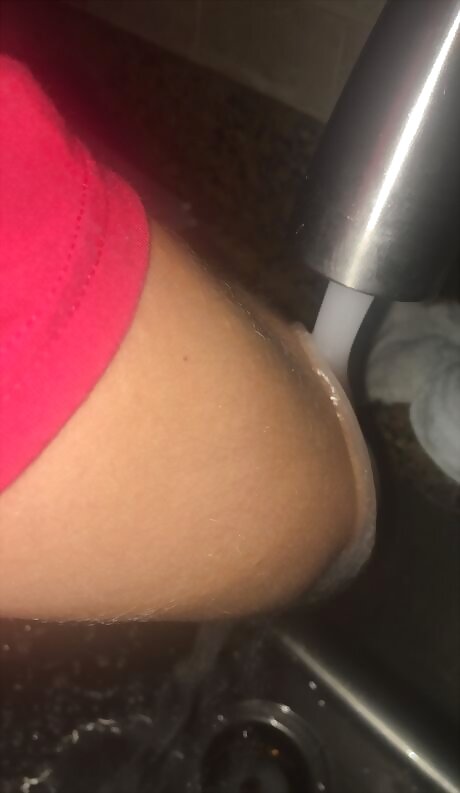
Rinse wound with cool water. For a wound that is not bleeding, slowly pour cool, distilled (if possible) water over the wound area. This will wash away any debris or foreign contaminants that could may be present in the afflicted area. Rinse the area around the wound as well. Do not scrub the wound hard as this may damage more tissue or increase bleeding. Rinsing the wound with warm water will increase blood circulation and bleeding.
Preparing Saline Solution

Boil eight ounces of water. To prepare a saline solution, first pour eight ounces of distilled water into a saucepan and bring to a boil. The water does not have to be rapidly boiling. Once bubbles reach the surface of the water, it is considered boiling. Continue to boil for 15 minutes.
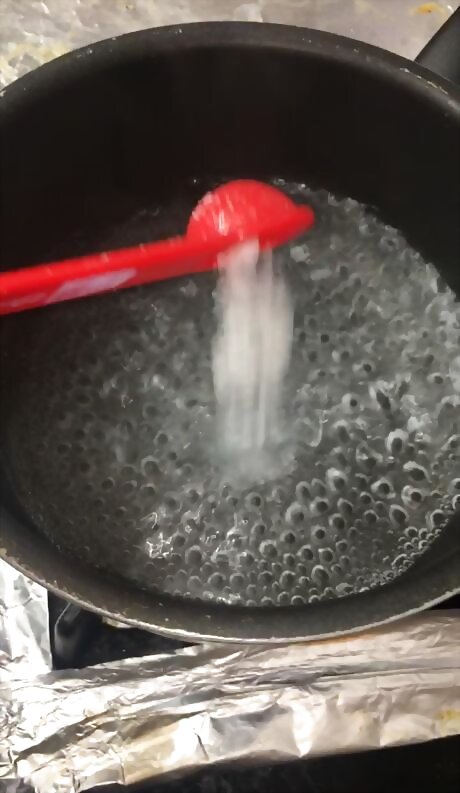
Add 1/2 teaspoon of salt. Slowly pour 1/2 teaspoon of salt into the boiling water and stir to dissolve. Make sure not to use iodized salt. When salt (sodium chloride) is iodized, it changes its structure and function. Continue stirring the solution until salt is completely dissolved. Once the salt is completely dissolved, turn the stove off. The saline solution should appear to be clear. It should not be cloudy or milky in appearance. The salt has completely dissolved when you no longer see any salt granules.
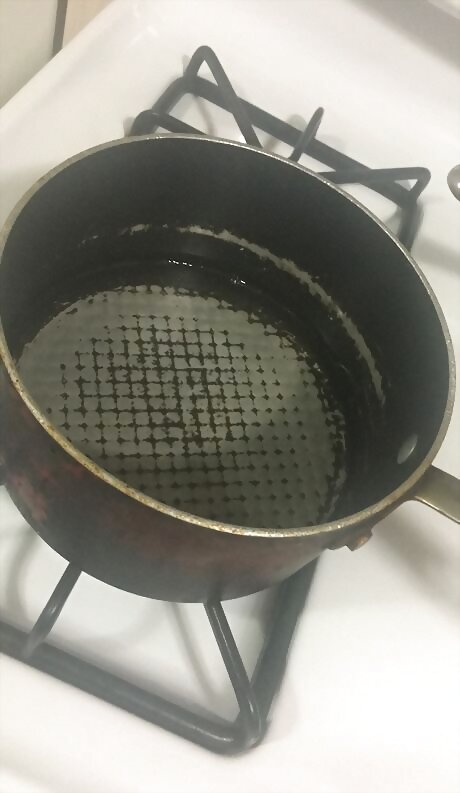
Allow the saline solution to cool to room temperature. After about 15-20 minutes, test the temperature of the water with a thermometer. The water has cooled sufficiently when it reaches a temperature of approximately 70 °F (21.1 °C), or is comfortable to the touch.
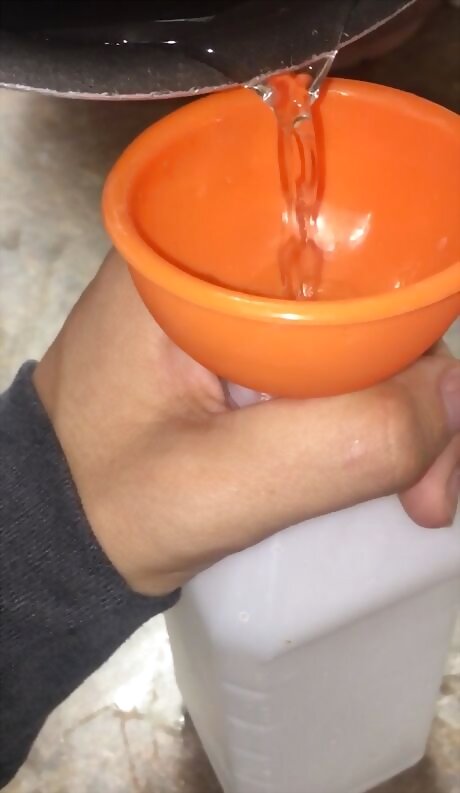
Pour the solution into a bottle. Use a sterile, narrow-top bottle, and funnel to pour the solution directly into the bottle. Tightly fasten the cap onto the bottle. Both the bottle and funnel need to be sterile before pouring the saline solution.
Cleansing the Wound with Saline Solution
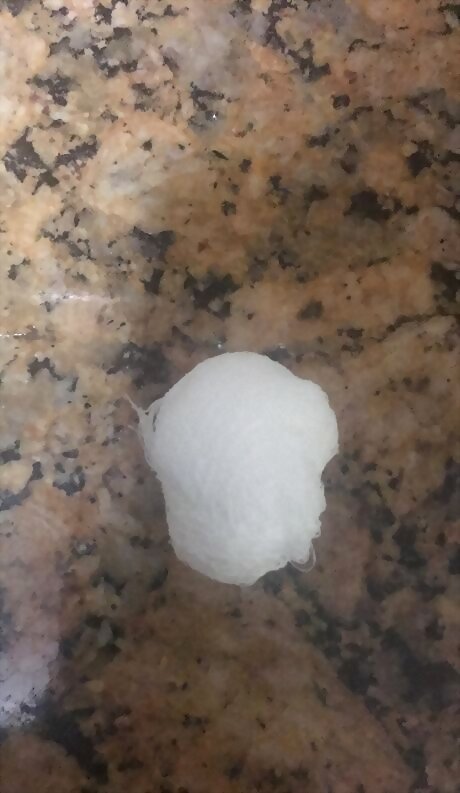
Prepare to cleanse the wound. Moisten a cotton ball with the saline solution. Make sure the cotton ball are sterile.
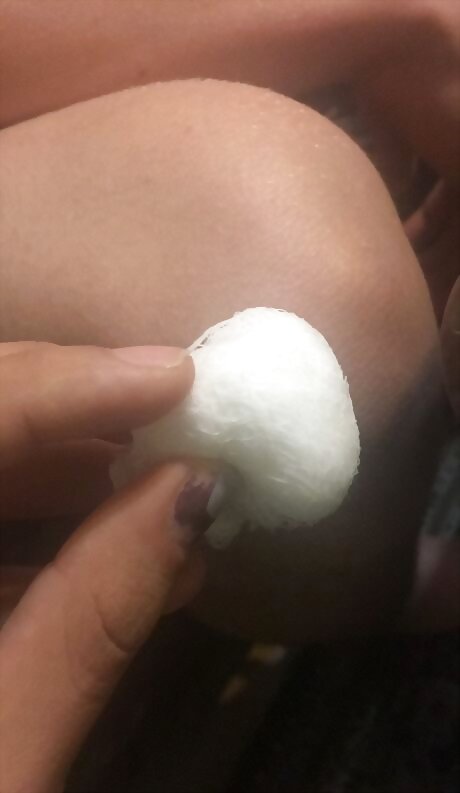
Gently pat a moistened cotton ball onto the wound. Several cotton balls may be needed depending on the size of the wound. Cleanse around the wound as well. It is important to be gentle as there is a potential to damage surrounding tissue if too much pressure is applied.
After Cleansing the Wound
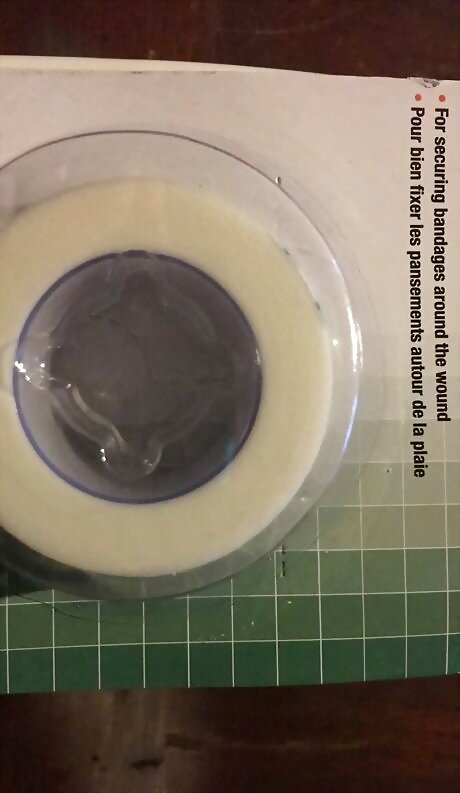
Cut several pieces of medical tape into three inch strips. It is important to cover open wounds to prevent an infection and to avoid bacteria, debris and dirt from entering the wound. The tape will be applied to hold the gauze onto the wound. Medical tape is highly recommended as it is easily removable, without damaging the skin. Be sure not to place the medical tape directly onto the wound. Its purpose is to secure the dressing in place.
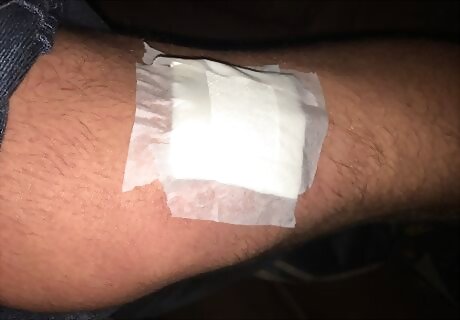
Place gauze over the wound. Have enough gauze to cover an area two inches past the wound on all sides. Use the tape to secure the gauze into place.
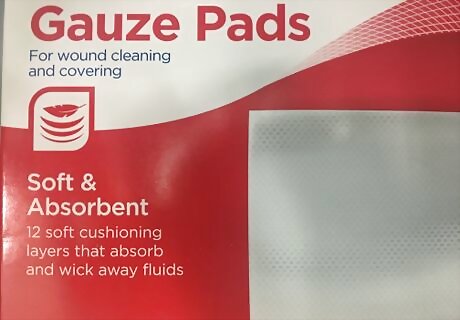
Replace the gauze. Old wound coverings can promote infections and slow down the healing process. If you have bled through the gauze, it is important to change it. At first, the dressing may need replacing every three to four hours, then up to once or twice a day as it begins to heal. If you see any increased redness around the wound, increase in swelling, or puss, contact or visit a medical professional right away. This could be a sign of infection. If your wound is scabbing or see tissue formation, these are normal signs that your wound is healing!














Comments
0 comment